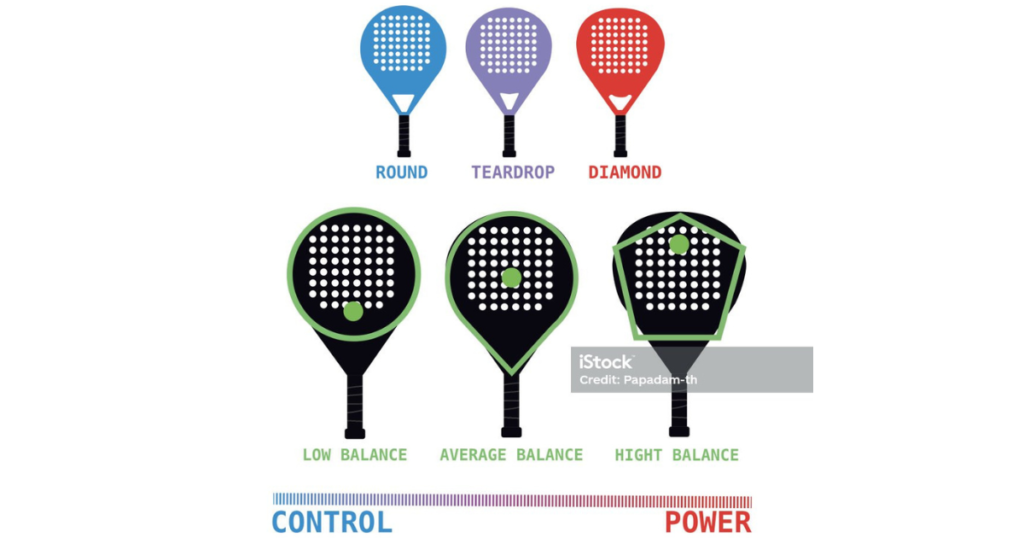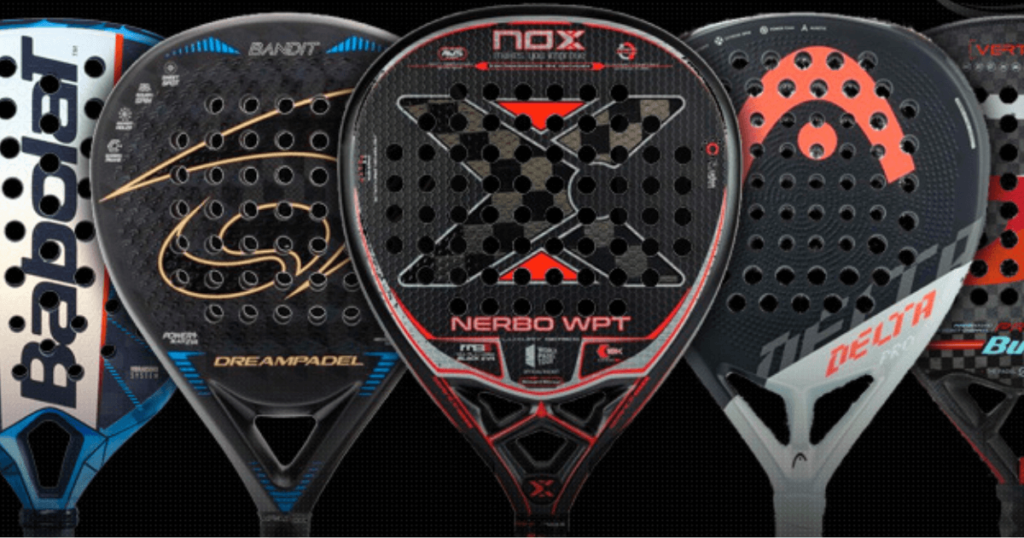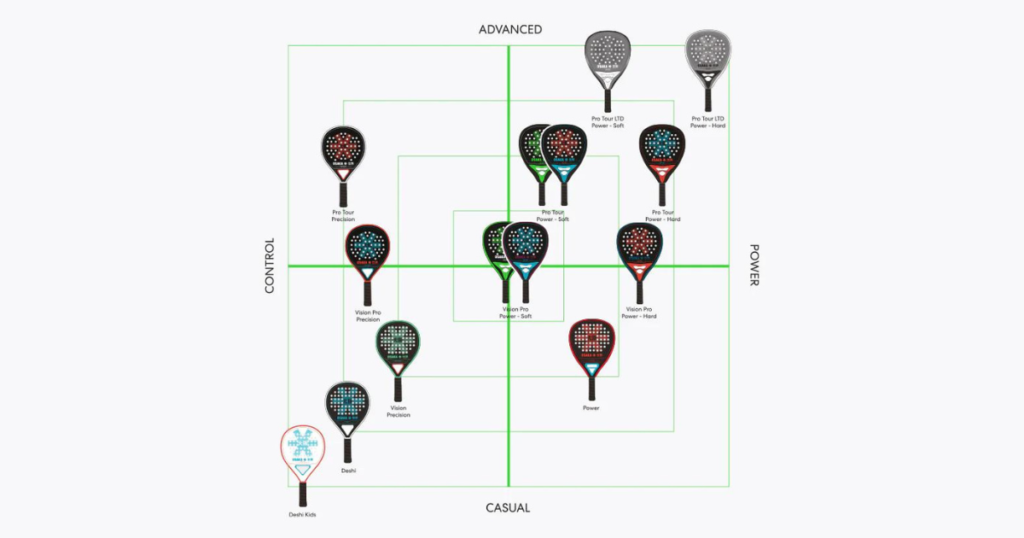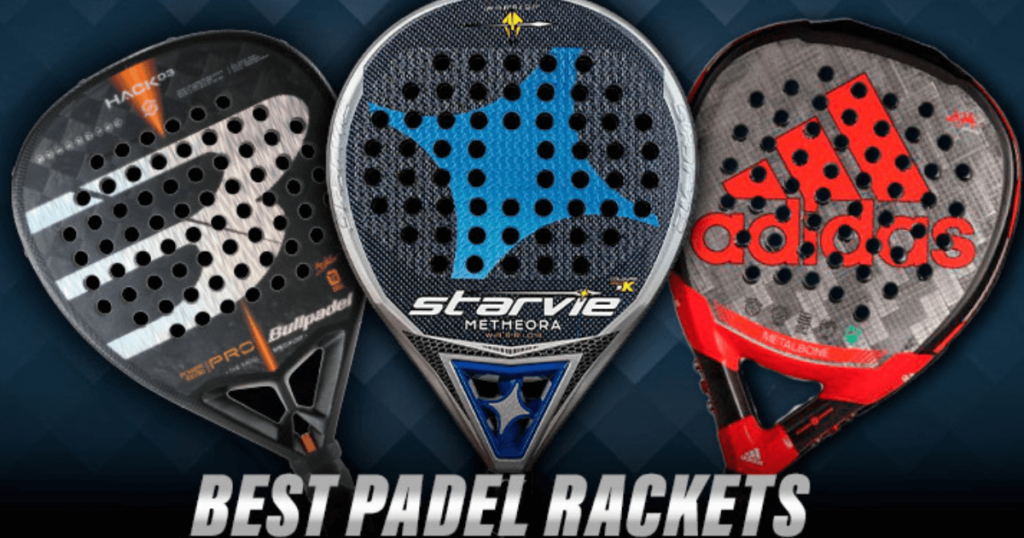This comprehensive guide on “how to test a Padel racket before you buy it” will provide you with essential information and practical tips to test and select the ideal racket for your needs, ensuring maximum performance and enjoyment on the court.
Padel is a sport that has been gaining popularity worldwide, and with that comes the need to find the perfect racket to enhance your game. But how do you find the right padel racket that suits your playing style, skill level, and personal preferences?
Key Takeaways
- Test multiple padel rackets to find the ideal combination of weight, shape, and balance for your playing style and preferences.
- Leverage in-store demos, online rentals or brand-specific trials to evaluate performance before making a purchase.
- Consider previous year models from lesser known brands when looking to save money on your purchase.
Choosing the Right Padel Racket for Your Game

Your performance on the court can be significantly impacted by your choice of padel racket. The perfect racket should be tailored to your playing style, skill level, and personal preferences.
Finding a first racket that best suits your needs and enhances your game involves testing different options when choosing your first racket.
How to Test a Padel Racket: Control vs Power
In padel, playing style can be categorized into control or power. Control players prioritize precision and accuracy in their shots, while power players focus on hard strikes and formidable play.
The right racket should complement your playing style and provide you with the perfect balance of control and power. Testing padel rackets that suit your playing style is an important step towards making an informed decision.
For control players, lightweight rackets with a round shape are recommended, as they offer exceptional maneuverability and control over power. On the other hand, power players may prefer heavier rackets with a higher balance point, providing more power in shots but potentially sacrificing control.
Understanding your playing style will help you find the perfect padel racket tailored to your needs.
Skill Level: Beginner, Intermediate, or Advanced
Your skill level plays a significant role in selecting the right padel racket. Beginners should opt for lightweight, round-shaped rackets crafted from materials such as fiberglass or carbon fiber.
Intermediate and advanced players should look for rackets that offer a balance between power and control. Intermediate players may prefer medium-weight rackets with a slightly higher balance point, while advanced players might choose rackets with maximum power and control features.
Testing padel rackets designed for your skill level is a proven method of ensuring optimal performance on the court, while also preventing injuries such as tennis elbow.
Personal Preferences: Weight, Shape, and Balance
Your personal preferences are instrumental when selecting your padel racket. The weight of a racket can significantly affect your performance and comfort on the court.
Lighter rackets provide more maneuverability and require less effort to swing, while heavier rackets offer more power and steadiness.
The shape of the racket also influences your game. Here are some common racket shapes and their characteristics:
- Round rackets generally provide better control and precision.
- Teardrop-shaped rackets offer a balance of power and control.
- Diamond-shaped rackets also offer a balance of power and control.
Test different rackets to find the perfect weight, shape, and balance that suits your playing style and preferences.
How to Test Padel Racket’s Options:

Testing various options is key to finding the right padel racket. There are several testing methods available, including in-store demo programs, online rental services, and brand-specific trial offers.
Harnessing these testing options can guide you towards making an informed decision, ensuring your new racket perfectly suits your needs and enhances your game.
In-Store Demo Programs
In-store demo programs offer customers the chance to try out rackets before purchasing them. This enables you to test the racket’s weight, balance, and grip, ensuring the right fit for your game.
In-store demos also provide a personalized experience, with knowledgeable staff available to guide you in selecting the right racket based on your skill level, playing style, and preferences.
Leveraging in-store demo programs allows you to compare multiple padel rackets side by side and make a confident purchase decision.
How to Test a Padel Racket: Online Rental Services
In mainland Spain, online services let you try padel rackets at home or on a court before buying.
You can test top-notch rackets with these services, even ones that pros use in big tournaments like the World Padel Tour.
Using an online rental helps you find the racket that feels just right for your play.
Brand-Specific Trial Offers
Brand-specific trial offers provide an opportunity to test rackets from leading padel brands. These offers often include a trial period, allowing you to assess the racket’s performance and feel before making a decision to purchase.
Utilizing brand-specific trial offers allows you to test rackets from various brands and select the one that aligns best with your needs and preferences.
Essential Factors to Consider When Testing a Padel Racket

Comfort and vibration, sweet spot and responsiveness, and adaptability and learning curve are factors that should be considered when testing a padel racket.
These factors can significantly impact your game and overall experience, so it’s crucial to focus on them when testing different rackets.
When choosing a racket, it’s important to consider your own playing style and preferences
How to Test a Padel Racket: Comfort and Vibration
Comfort and vibration are crucial aspects to consider when testing a padel racket. The weight of a racket can greatly impact its comfort and vibration, with lighter rackets generally offering better maneuverability and comfort.
Heavier rackets, on the other hand, provide more power and stability, helping to reduce vibration during play.
Testing rackets with different weights and balance points is a viable approach to finding the perfect racket that offers the ideal level of comfort and minimal vibration.
Sweet Spot and Responsiveness

The sweet spot and responsiveness of a padel racket are essential for optimal performance on the court. The sweet spot is the area on the racket’s face that provides maximum efficiency in terms of control and power when striking the ball.
Conducting various tests such as bouncing a ball against the racket at a regulated speed and observing the feel when the ball hits the sweet spot, can help evaluate the responsiveness of a padel racket.
By focusing on the sweet spot and responsiveness during testing, you can ensure your chosen racket will enhance your game.
How to Test a Padel Racket: Adaptability and Learning Curve
When testing a new padel racket, it’s important to give yourself time to adjust to its feel and performance.
Factors such as weight, balance, material composition, and grip size can influence the adaptation period. Typically, it takes between 3 to 6 months to become accustomed to a new racket.
Allowing yourself time to adjust and taking note of signs of successful adaptation paves the way for making an informed decision on the perfect racket for your needs.
Practical Tips for Testing Padel Rackets

To make the most of your padel racket testing experience, make sure to consider the following practical tips: limit the number of rackets tested, test rackets in different conditions, and give yourself time to adjust.
These tips are designed to streamline the testing process and aid you in finding the perfect racket tailored to your needs and preferences.
Limit the Number of Rackets Tested
Limiting the number of rackets tested can help make the decision-making process easier and more efficient.
Testing too many rackets can lead to decision fatigue and make it difficult to remember which rackets felt satisfactory.
Testing a minimum of 2-3 padel rackets at a time is advisable to compare their performance and find the one that aligns best with your needs and playing style.
Test Rackets in Different Conditions
Try out rackets in many settings to see how they work. Different courts and weather can change how a racket feels.
To really know what’s best, use the racket on various courts and in different weathers. It’s also good to check out any science facts that might help.
Give Yourself Time to Adjust
When testing a new padel racket, it’s important to give yourself time to adjust to its feel and performance. As mentioned earlier, it typically takes between 3 to 6 months to become accustomed to a new padel racket.
Allowing yourself time to adjust and taking note of signs of successful adaptation paves the way for making an informed decision on the perfect racket for your needs.
Saving Money on Your Padel Racket Purchase
Saving money on your padel racket purchase can be achieved by opting for previous year models, exploring lesser-known brands, and waiting for sales and deals.
Considering these options can lead to finding a high-quality padel racket at a more affordable price, without compromising on performance.
Opt for Previous Year Models
Previous year models often come at a discounted price, providing an opportunity to save money without sacrificing quality.
Selecting a previous year model can result in finding a high-quality padel racket that offers similar features and technologies to the latest models, but at a more economical cost.
Wait for Sales and Deals
Waiting for sales and deals can result in significant savings on your padel racket purchase. Keeping an eye on seasonal sales, holiday promotions, and special offers can help you find great deals on high-quality padel rackets and save money in the process.
It pays to be patient and wait for the right deal to come along. With a little
Summary
In conclusion, finding the perfect padel racket requires considering various factors such as playing style, skill level, personal preferences, and testing options.
By following the practical tips and advice provided in this guide, you can test and select the ideal padel racket that not only suits your needs but also enhances your game. So, gear up and get ready to conquer the court with your perfect padel racket!
Frequently Asked Questions
How do you test a padel racket?
To test a padel racket, try hitting it in different areas for at least a few minutes and feel the vibration of the racket to get an accurate sense of its quality.
Do Padel Rackets Expire?
Yes, padel rackets do wear out. On average, they’re good for about a year, but it depends on how often you play and the racket’s quality.
If you play casually, your racket should last roughly 100 games. That’s about 6-12 months if you play 2-3 times weekly.
Should padel racket be rough or smooth?
For beginner to intermediate players, a rough paddle racket may be better for control and grip.
Advanced players who prioritize speed and maneuverability should consider a smooth paddle racket.
When Should I Replace My Padel Racket?
Do you feel pain when you hit the ball? Feel vibrations in your arm? If your racket isn’t reacting like it used to, it might be time for a change.
Issues like frame damage, heat effects, or just everyday wear can hurt your game. Watch out for these signs!
How do I know if my padel racket is broken?
Is your racket feeling less bouncy or vibrating more? If it’s not hitting as strong as it used to, you might need a new one. Better to switch it out before it breaks!
